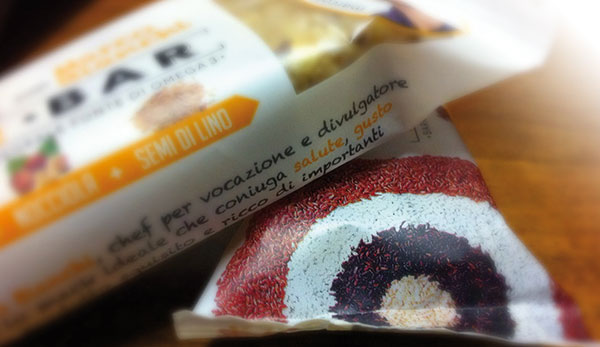Flexible packaging for converting
FACTS AND FIGURES From 2005 to 2014, flexible packaging for converting had a 3.3% annual growth rate. This growth persisted during the economic crisis, with an average annual rate of +2.7% during the period 2011-2014.
In terms of life cycle, flexible packaging is one of the few areas in the packaging sector to still show progressive and promising growth.

The market
Some 78 manufacturers are operating in Italy. In 2014, the sector’s total turnover was about 1,995 million euro, about 27% of which made up of concerns exceeding 160 million euro, 35% between 50 and 150 million euro and the remaining 38% or so with less than 50 million euro.
Also in 2014, domestic demand (185,000 tons) grew by 2.2% over the previous year. Domestic consumption dropped only in 2012, but the crisis was counterbalanced by growing exports.
Sales abroad grew by 5.7%, absorbing 48% of production.
Quality and customer service are the strong points of Italian flexible packaging manufacturers, which have always had a strong vocation for exporting (certain concerns in the sector export more than 70% of their production), with flows to both the EU and elsewhere.
Imports have always been modest, 1-2% of national consumption, but foreign competitors, particularly from Turkey, are making their presence felt - not so much in Italy, but especially when Italian producers operate abroad.
Until 2004 - 2005, the growth of flexible packaging for converting was driven mainly to the detriment of other packaging types’ market share, but now the sector’s growth is driven by the presence of new sectors, such as frozen and refrigerated ready meals, 4th range fresh fruit and vegetable products and pre-packaged and weighed fresh food.

Complex and evolving structures
This category of packaging, as is known, has a complex multi-material structure: cellulose, plastic, aluminium film or metallization.
When examining the characteristics of current flexible packaging for converting, a clear progressive trend emerges by which average weight in ratio to performance is reduced. This process is also the result of intense research aimed at identifying new materials and production techniques. In this context, plastic films see a progressive spread in use, with a consequent slowdown in the use of other materials.
With this lightening process in mind, production by square meter shows a slightly better growth rate than that calculated according to weight. It is estimated that, at the moment, about 70% of flexible polylaminates for converting are all plastic, while about 25% contain aluminium foil and 5% paper.

Sectors of use
The food sector, with a 90.7% share, remains the principal outlet market.
In this sector, baked goods and food pastes account for 25%, followed by cheese with 18.8% and some growth; processed meats and cold cuts with 7.9%, some decline; frozen foods 7.5%, stable; coffee 4.5%, slight growth; pet food 3.7%, slight shrinkage; other foods 23.3%. Flexible polylaminates also show strong growth potential in vegetable preserves, tomato products for horeca, creams, sauces, etc.
In the non-food sector, the major sectors of use are cosmetics and pharmaceuticals, each with a 4.7% share. The remaining 0.2% is accounted for by the chemical industry.
Raw materials for the production of flexible packaging for converting
The progressive lightening of flexible packaging has also entailed alterations to the mix of raw materials used to produce polylaminates.
The trends are that thin aluminium foil is replaced with metallization (aluminium) where possible, and paper and board are also declining slightly.
Plastic films, on the other hand, show progressive growth. In 2014, their use was at about +3%, against +2.5% for aluminium, while paper and board remained stable on the whole.
Plastic films are also going through a reduction of grams per square meter. Indeed, in many cases, the spreading use of barrier films (such as Nylon, EVOH, etc.) enables reducing the number of layers or thickness of film.
Plinio Iascone
Istituto Italiano Imballaggio




















